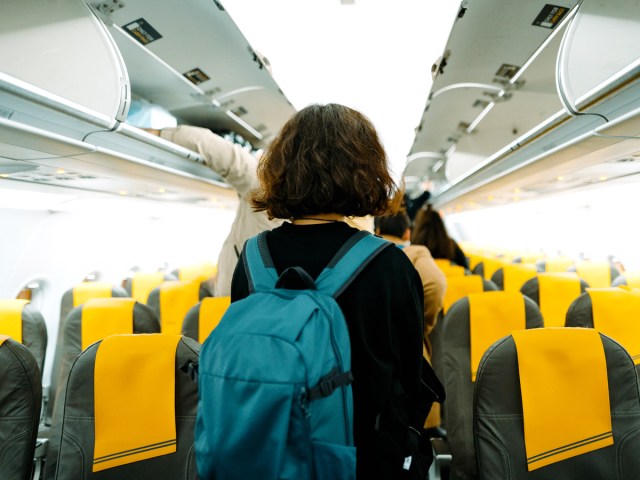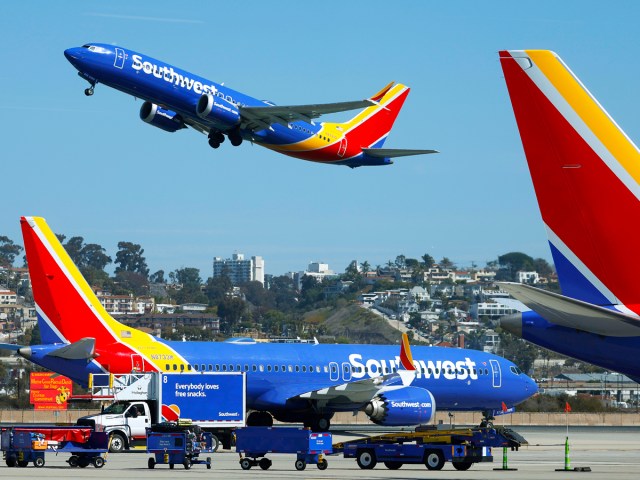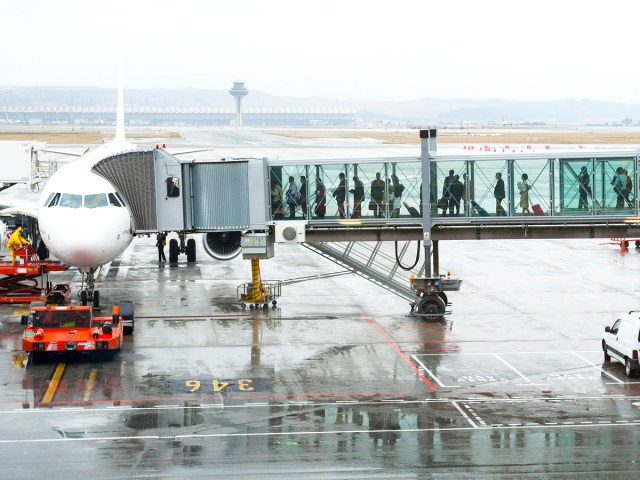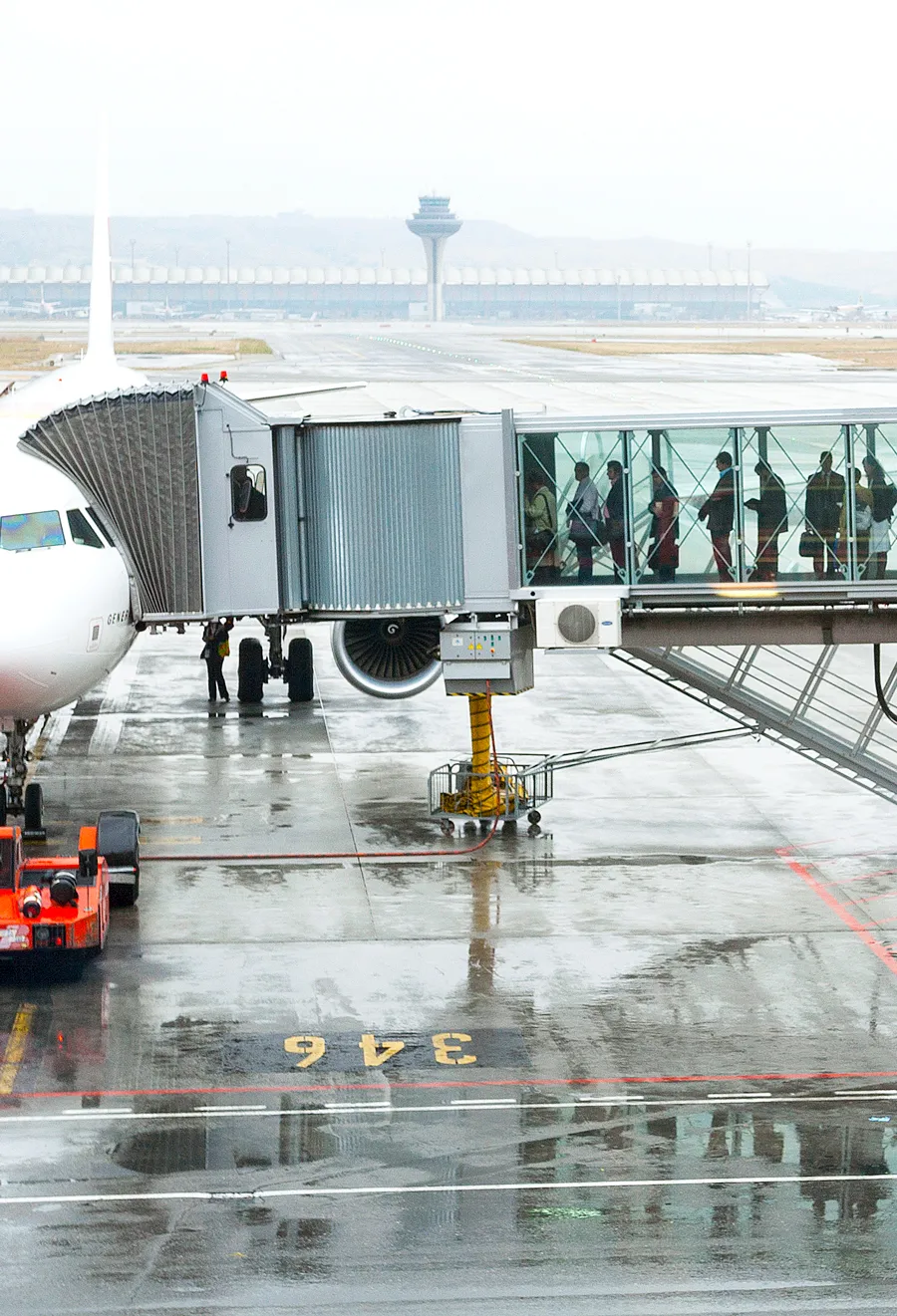On a recent flight, a late inbound aircraft led to us boarding and pushing back from the gate behind schedule. However, once we finally departed, the pilot announced that we could “make up some time in the air” — and sure enough, we arrived at our gate early, despite the late pushback. I wondered, did we fly faster than usual to account for the delay? It’s not likely. Instead, most airlines these days “pad” their schedules, adding a few extra minutes to the anticipated flight time. Learn more about this practice and why your flight seems to arrive early (even when it leaves late), along with which U.S. airlines pad their schedules the most.
What Is Schedule Padding?

It goes without saying that air travel is incredibly complex. Each time a plane pushes back from the gate, it requires careful coordination among pilots, air traffic controllers, ramp agents, dispatchers, and many other people and systems to ensure the flight operates safely and smoothly.
When airlines schedule flights, they account for not only the time in flight — based on how many miles the route is, how fast the particular aircraft flies, and the prevailing winds — but also the time taxiing on either end, after pushback and before pulling up to the arrival gate. For instance, some airports may be busier or have fewer runways, requiring planes to queue for takeoff longer, or some routes may face frequent traffic congestion, requiring planes to take circuitous paths.
Schedule padding, also known as block time inflation or schedule creep, allows airlines to account for all the variable factors of air travel.
“Padding schedules is a common practice across all modes of transportation, especially in the airline industry where external factors like air traffic control, aircraft maintenance, and weather conditions can significantly impact the departure and arrival times, leading to constant changes,” Jeff Price, an aviation and aerospace science professor at the Metropolitan University of Denver, explained to FinanceBuzz. “Padding is nothing more than programming in extra time to the actual flight time to account for variables. It’s just like a person driving to a location early to account for unexpected traffic or delays.”
In an interview with The Washington Post, Max Barrus, vice president of planning and revenue at Breeze Airways, concurred. He shared, “The reality is you can’t fix every single potential problem that could occur on a given day of travel, but you can build a little bit of padding into the schedule. If you didn’t do that, nobody would ever be on time.”
Barrus also said that, thanks to “a lot of inefficiencies in the system,” flights now take longer on average. Over the past decade, the average time airlines schedule for the same flight has increased 8% to 9%, according to Barrus, mainly due to busier airports and skies.
Benefits and Downsides of Schedule Padding

For many airlines, schedule padding creates a useful buffer for when things go wrong. But boosting on-time statistics isn’t just about appearances — late flights cost airlines money, too.
Each time a flight arrives behind schedule at a hub, for example, passengers may miss their connections, and there’s often a domino effect that can create further delays as the day goes on. Adding a few extra minutes into the block time — the time between pushback and when the aircraft pulls up to the arrival gate — often leads to smoother operations overall. And for passengers, it might mean you’re more likely to make your connection.
The buffers still need to be reasonable, however. A spokesperson for the Department of Transportation shared with The Washington Post that the law prohibits “unrealistic or deceptive scheduling of flights by airlines.” Plus, one could argue that airlines are incentivized not to overpad because, in general, they want to maximize profits by flying planes as many hours as possible each day.
And yes, there are sometimes downsides to schedule padding for passengers. We’ve all been there before when a flight lands 30 or 40 minutes early, only to taxi over to a waiting area because the arrival gate is still occupied by another aircraft. No one likes to spend extra time in a cramped economy seat.
Which U.S. Airlines Pad Schedules the Most?

Airlines take different approaches to scheduling, based on a variety of complex factors, which leads to some padding flight times more than others. A report from FinanceBuzz analyzed millions of flights scheduled in the U.S. in 2022 and found that, on average, airlines added around 9% of the scheduled flight time in the form of padding. On a typical two-hour flight, this translated to an extra 11 minutes in the scheduled block time.
The report also found that Southwest Airlines inflated flight times the most (by an average of 13.9%), followed by Alaska Airlines (11.3%) and United Airlines (10.2%). The airlines that padded schedules the least were Frontier Airlines (6.8%), Allegiant Air (6.4%), and Hawaiian Airlines (4.7%). American, Delta, JetBlue, and Spirit were in the middle of the pack.
What Counts as “On Time”?

Despite the fact that airlines are padding schedules, over 20% of flights in the U.S. experienced a delay in 2024, according to the Bureau of Transportation Statistics. But, as is the case for adding a few extra minutes to the scheduled flight time, there’s more than meets the eye when it comes to on-time data.
Some flights that arrive at the gate a few minutes late technically still arrive on schedule, at least according to the DOT. That’s because, for reporting purposes, the department defines “on time” as either departing or arriving within 15 minutes of the scheduled time. So, even if your next flight takes off late and doesn’t “make up time” in the air, you might still end up arriving “on time.”
More from our network
Daily Passport is part of Inbox Studio, which publishes content that uplifts, informs, and inspires.
















